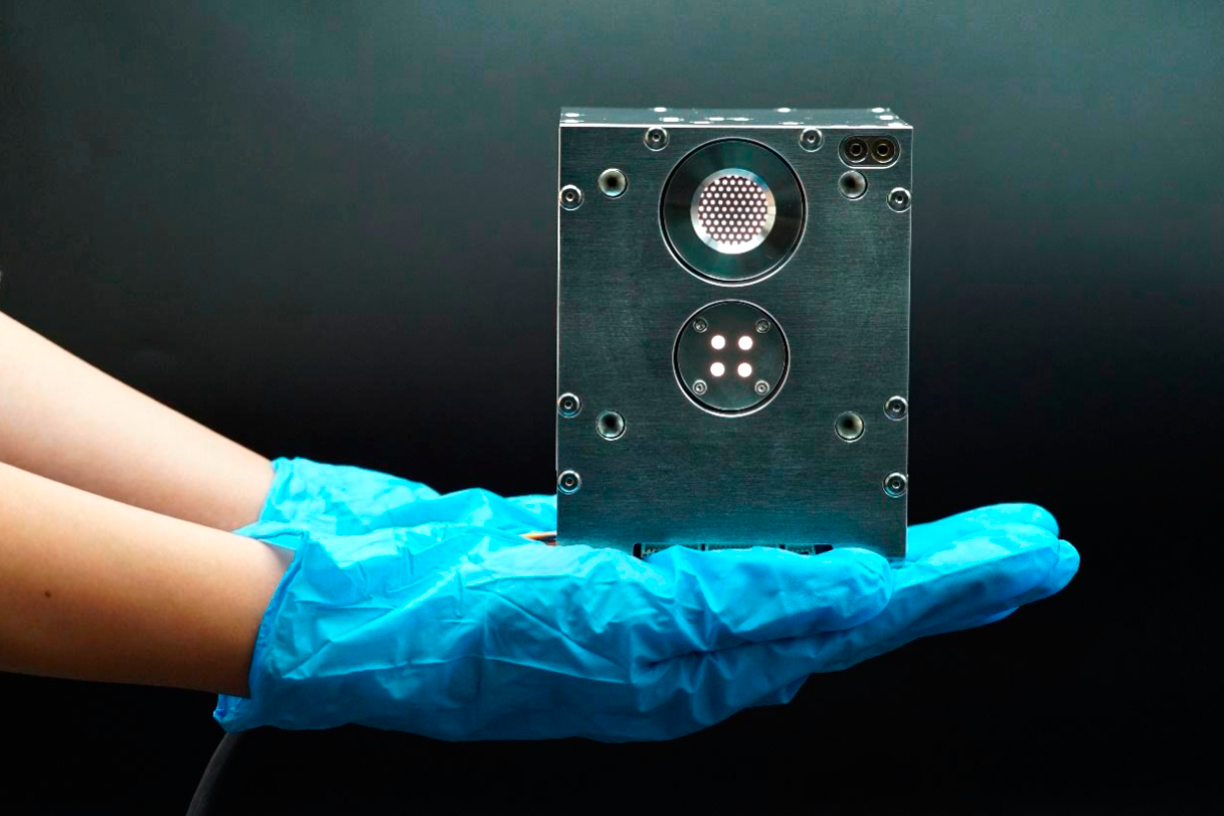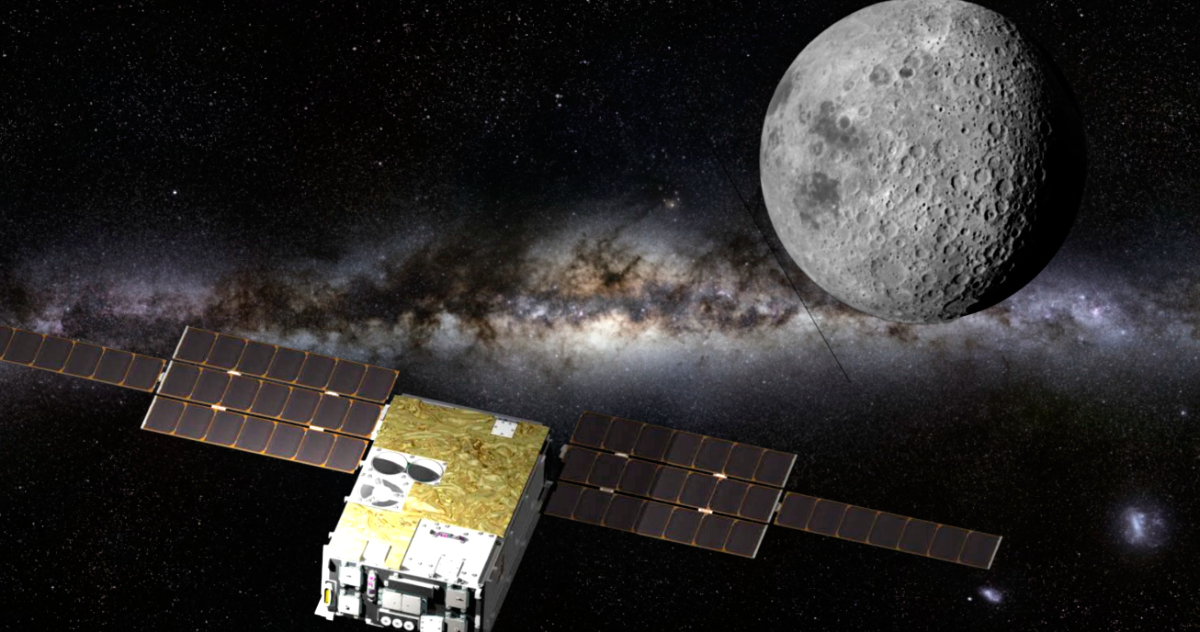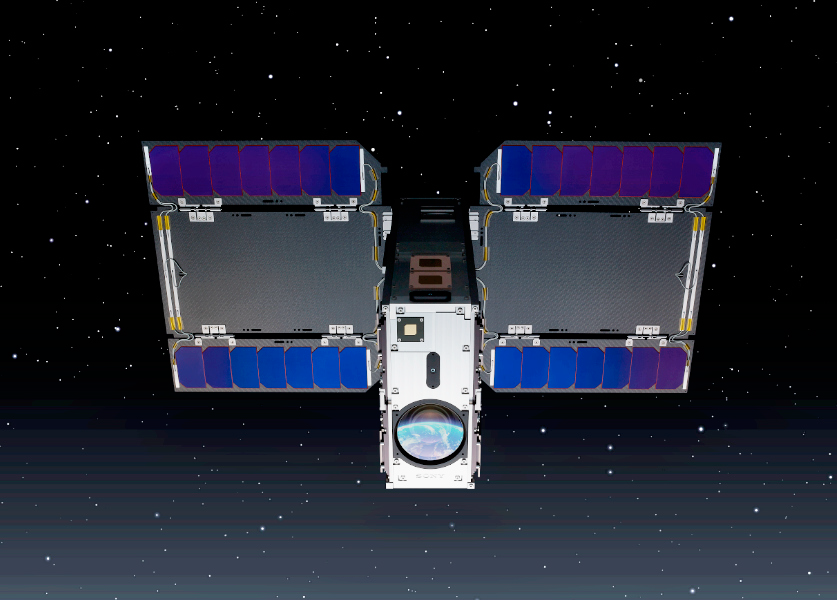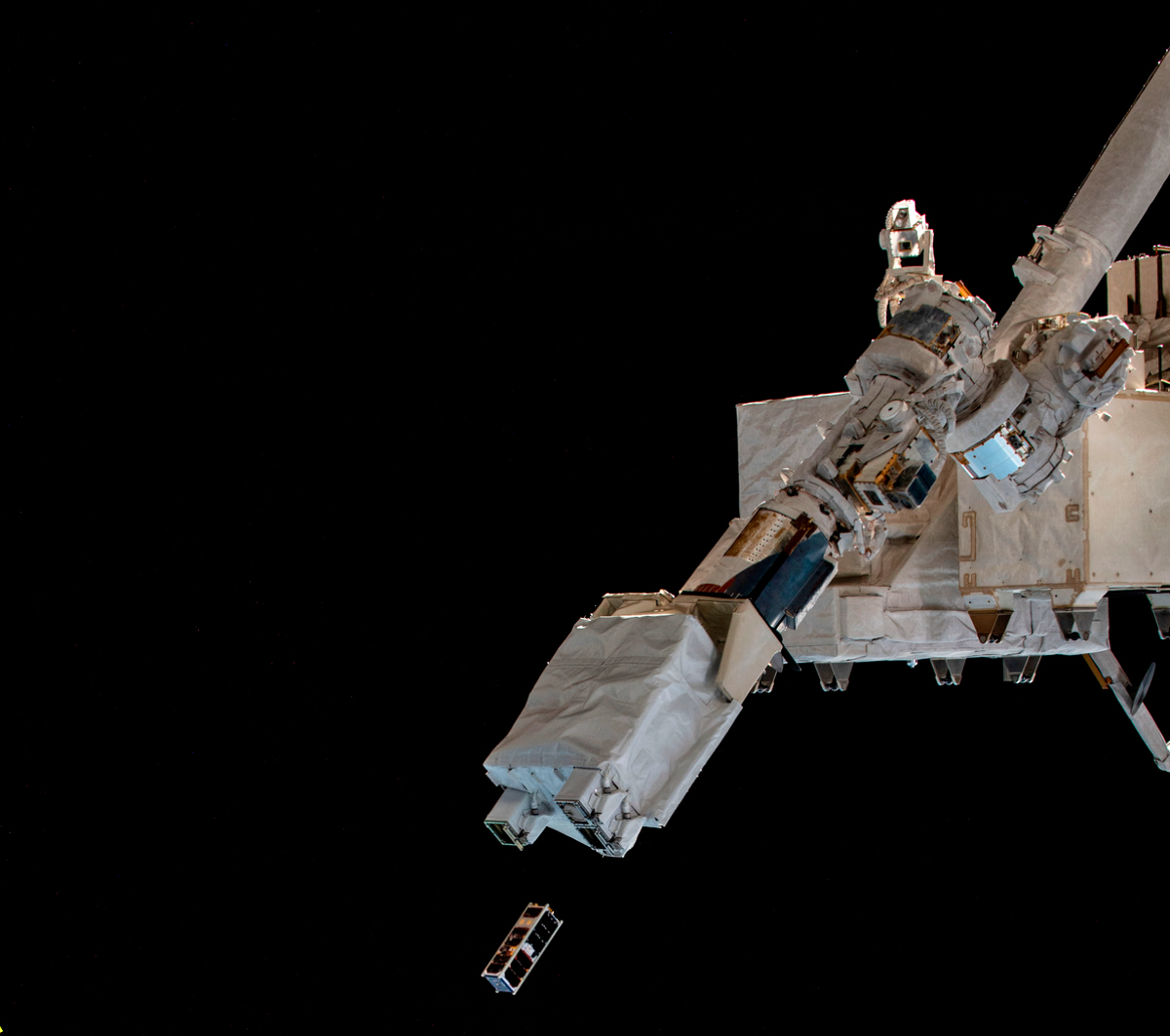Water-fueled icon thruster empowers satellites.
Water ion thrusters now offers 10x higher fuel performance, thereby dramatically extending satellites’ useful years and mitigating space debris.

Pale Blue, a Japanese space mobility startup, has developed a water ion thruster. This ultra-compact thruster uses less than 250ml of water as a propellant to keep CubeSats in their orbits and dramatically extends their useful years in space, all the while also mitigating space debris.
Conventional water-based propulsion systems aren’t viable for space use due to their low propellant efficiency and the quantity of water that is required to generate steam. Pale Blue’s patented, electron cyclotron resonance (ECR) technology enables the thruster to extract ions out of water — on demand — resulting in excellent propellant efficiency.

Artistic rendition of EQUULEUS on-orbit
Designed specifically for CubeSats (minimum size: 10 x 10 x 10 cm) up to satellites of 500 kg, the Pale Blue Water Hybrid Thruster can extend what would normally be one-half to a full year smallsat lifespans to three to five years... or longer.
This thruster also guides these small spacecraft back to Earth at their end of life, preventing them from becoming space debris. Use of water as propellant in lieu of toxic materials also makes the satellites’ production significantly safer than other conventional manufacturing methods.
“CubeSats prematurely lose their usefulness and become space debris simply because they didn’t have engines to freely move around in space. Our technology enables installation on CubeSats by providing inexpensive, low-power propulsion and efficiently harvesting energy from a small amount of water – a clean, inexpensive and abundant natural resource,” Pale Blue Co-founder and CEO, Jun Asakawa, said. “By replacing the incredibly toxic propellants like hydrazine with water, we can make space far more accessible to humans. We were thrilled to introduce this truly sustainable propulsion technology at the recent SmallSat Symposium 2023.”
Flight Heritage
• EQUULEUS – JAXA and the University of Tokyo’s mini-exploration spacecraft launched by NASA’s SLS on November 16, 2022 and was successfully injected into its scheduled orbit toward the Lunar Lagrange point. This is the world’s first successful orbit maneuver beyond LEO using water as propellant. (Artistic rendition of EQUULEUS is courtesy of the Nanosats Database)
• EYE by STAR SPHERE – Sony’s satellite launched by a SpaceX Falcon 9on January 3, 2023. The propulsion system will enter and maintain the orbit of the satellite, which will fly in LEO at an altitude of 500 km to 600 km. Leveraging its technology, EYE will stay in orbit for approximately three years.

Artistic rendition of STAR SPHERE’s EYE smallsat
• OPTIMAL-1 – A multi-mission satellite for space demonstration manufactured by ArkEdge Space. The satellite was launched by SpaceX Falcon 9 on November 27, 2022, and deployed from ISS KIBO on January 6, 2023. Pale Blue’s thruster will also conduct a space demonstration in April of 2023.
Looking Ahead
To create mobility capabilities, Pale Blue will first establish a mass production system that meets the demand for large-scale projects, such as smallsat constellations. Meanwhile, the company will develop a propulsion system capable of working with satellites that weigh more than 100 kg.
Pale Blue will conduct ongoing research and development of water-based propulsion systems that will be characterized by high output per unit of power input. These systems will solve the following problems
• The risk of propellant price hikes and its supply chain
• Insufficient development of subcomponents, such as power supplies essential for thrusters
Pale Blue envisions future research and development with a view to providing a refueling service similar to a gas station in space. Recent discoveries of water-source materials on the Moon, Mars and asteroids have increased the possibility that water can be produced. This will allow the water to be re-supplied to the propulsion systems and will enable the smallsat’s return to the mission or engage in deep space exploration. Furthermore, this technology will promote sustainable space development by eliminating the need to continuously manufacture and launch satellites.
Space Sustainability
A great concern regarding space sustainability is space debris that is created by damaged or inoperable spacecraft as well as various, detached components from the satellites. Collisions with such matter can destroy spacecraft and lead to the creation of additional debris. After all, satellites that cannot maneuver are unable to avoid collisions, and this means that propulsion systems play important roles in debris avoidance.
 ArkEdge’s OPTIMAL-1 smallsat being launched from the International Space Station
ArkEdge’s OPTIMAL-1 smallsat being launched from the International Space Station
However, traditionally, smallsats are not equipped with practical propulsion systems. Conventional systems powered via chemical reactions are hampered by huge propellant requirements and high hazard risks due to toxic or explosive material.
Electric propulsion, on the other hand, excels in fuel efficiency and is preferred for smallsats as such space vehicles carry less fuel and offer considerable safety due to the reaction-free propellant. However, the challenge is in meeting the high power requirement of conventional electric propulsion systems that must fit within the far smaller envelope for installation into smallsats.
Pale Blue offers a wide range of propulsion systems up from 0.25U size and 9W power requirements — suitable for CubeSats. The propulsion systems operates on water, the ultimate green propellant, so it has advantages in safety and handling; there are no concerns about explosion from residual fuel.
Features + Technology
Culminating the decades of research by the University of Tokyo, Pale Blue’s patented Electron Cyclotron Resonance (ECR) technology enables on-demand generation of water plasma to fuel CubeSats via a miniature mechanism that doesn’t sacrifice strictly restricted envelope and power. The company’s envisioned use of the technology for in-space water refueling can potentially extend the useful lifespans of CubeSats further than currently realized.
Pale Blue is a space startup from the University of Tokyo founded in 2020. The company is dedicated to thrusters innovation for small satellites that use water as a propellant. Through its water-based propulsion technology, Pale Blue aims to develop a space ecosystem where in-space mobility is not only affordable but completely safe to both humans and the surrounding environment.


“Pale Blue successfully developed and operated its water-based thruster, and with this, the company takes a huge step forward towards orbit insertion for STAR SPHERE Project,” said Jun Asakawa, CEO and Co-Founder of Pale Blue. “We feel a strong significance in this project, which creates new values through the perspective of space and provides opportunities to learn about the Earth and its environment. We will continue technological innovation to create mobility capabilities that are core to the space industry and pioneer the expansion of human possibility.”
pale-blue.co.jp
Author Emily Okuhara is the Manager of Marketing & Communications at Pale Blue.
Her email is e.okuhara@pale-blue.co.jp

